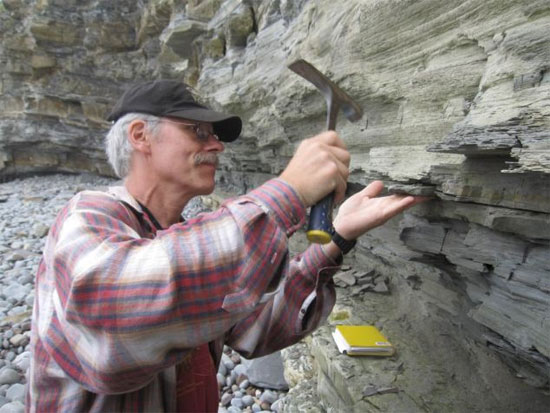The creatures of the dinosaurs extinct due to volcanoes
(Scientists around the world from New Jersey to North Africa), they found a link between the sudden disappearance of half of the species. Earth 200 million years ago, with the fact that a super volcano erupted accurately.
Eruptions can cause climate change so dramatically that many organisms cannot adapt - possibly at a similar speed to the warming of man-made climates today. This extinction paved the way for the dominance of the dinosaurs on Earth about 135 million years later, before the giant reptile was destroyed in a cataclysm on our planet.
In recent years, many scientists have hypothesized that the extinction of the end of the Triassic period and at least four other extinctions occurred in part due to the super volcanoes and the results of climate change. However, they have not been able to connect minerals produced by eruptions to extinction. This study gave a close chronological link to ETE - 201,564,000 (ETE - End-Triassic Extinction), exactly the same time as a giant mass of lava flows. run.
'This may not quell all questions about the exact mechanism of extinction itself. However, the coincidence of active volcanic time and extinction is quite certain , 'said study co-author Paul Olsen, a geologist of a university research unit. Columbia, who studied border lines since the 1970s, said.

The creatures of the extinct dinosaurs erupted by volcanoes
This new study incorporates a number of pre-existing lines of evidence by arranging them with new techniques to date rocks. The study's lead author, Terrence Blackburn, used the decay of uranium isotopes to determine the exact dates of basalt rocks, the remaining rock of the eruption.
All basalt analyzed in this study deals with the series of eruptions called CAMP - Central Atlantic Magmatic Province . CAMP is a large lava flow connection formed in the supercontinent Pangea in the Mesozoic era. This is a series of massive known eruptions that began about 200 million years ago, when nearly all continental regions were still a huge mass.
These eruptions have emitted lava on an area of about 2.5 million miles. Residues of CAMP lava are found in both North and South America as well as in North Africa. Scientists analyzed samples collected from Nova Scotia, Morocco of the suburbs of New York City.
Previous studies have shown an association between eruptions and extinctions.
Blackburn and his colleagues show that the eruption in Morocco was the earliest, compared to Nova Scotia and New Jersey about 3,000 and 13,000 years later. Sediments under that time contain pollen, spores and other fossils typical of the Triassic period.
Among the disappearing creatures are the ancient conodont, ancient crocodiles, tree lizards and many broadleaf trees.
Chronology is further clarified by a layer of sediment just right before the extinction that contains mineral particles that provide evidence of a periodic magnetic pole.
A previous study by Kent and geochemist Morgan also showed that each volcanic eruption will double the concentration of carbon dioxide - one of the main components of volcanic emissions .
After the cold pulse, the warming effect of this greenhouse gas will last for millennia, destroying organisms that cannot radiate heat to reduce body temperature. The increased amount of CO 2 causes a series of chemical reactions that cause the oceans to be acidified, causing the populations of limestone shells to be destroyed. If this is not enough, there is also some evidence that a large meteorite collides with the Earth at the time of the extinction, but seems unlikely.
A meteorite impact about 65 million years ago caused the extinction of dinosaurs - this event facilitates the growth and dominance of mammals, including humans. .
However, scientists say they have not yet calculated exactly how much CO2 has been released into the atmosphere from eruptions and how they have had a specific impact. And this is what they have to focus on to continue to do research in the future.
- The cause of dinosaurs extinction
- Meteorites make dinosaurs extinct
- What happens if humans and dinosaurs coexist?
- 10 weird, hard to imagine dinosaurs
- Discovered the body of the creature of today resembling dinosaurs 65 million years ago
- Frogs evolved by asteroids made dinosaurs extinct
- Dinosaurs are the most 'black' creatures on Earth's history
- People have nighttime sleeping habits thanks to ... extinct dinosaurs?
- How dinosaurs dominate Earth? That era begins with the Great Extinction
- 10 misconceptions about dinosaurs
- Fossils reveal information about life regeneration on Earth after extinct dinosaurs
- As long as meteors fall more than 30 seconds, dinosaurs are not extinct
 Discovered an ancient centipede fossil 99 million years old
Discovered an ancient centipede fossil 99 million years old Discovered bat-like dinosaurs in China
Discovered bat-like dinosaurs in China Discovered a 200-year-old bronze cannon of the coast
Discovered a 200-year-old bronze cannon of the coast Discover 305 million-year-old spider fossils
Discover 305 million-year-old spider fossils